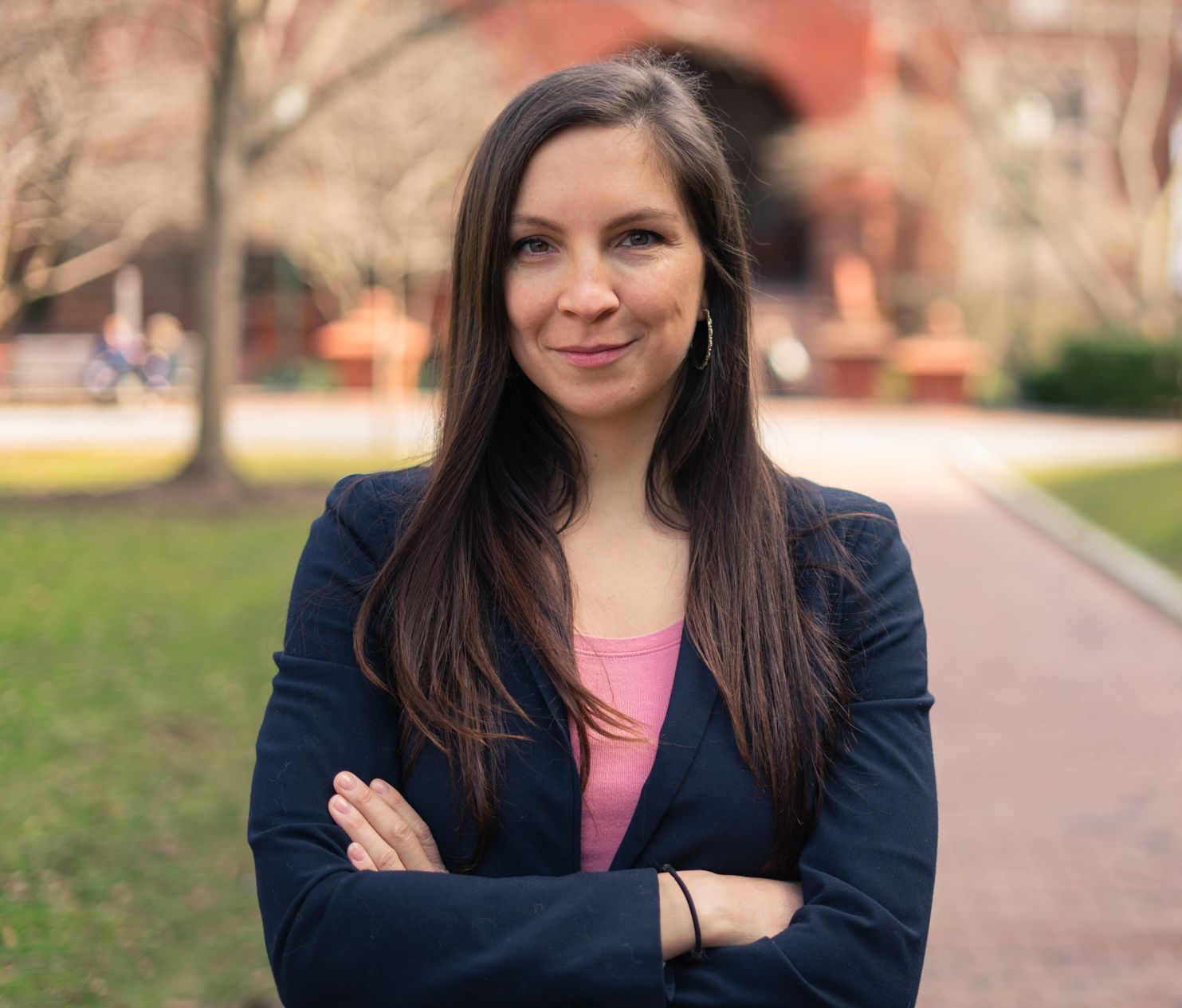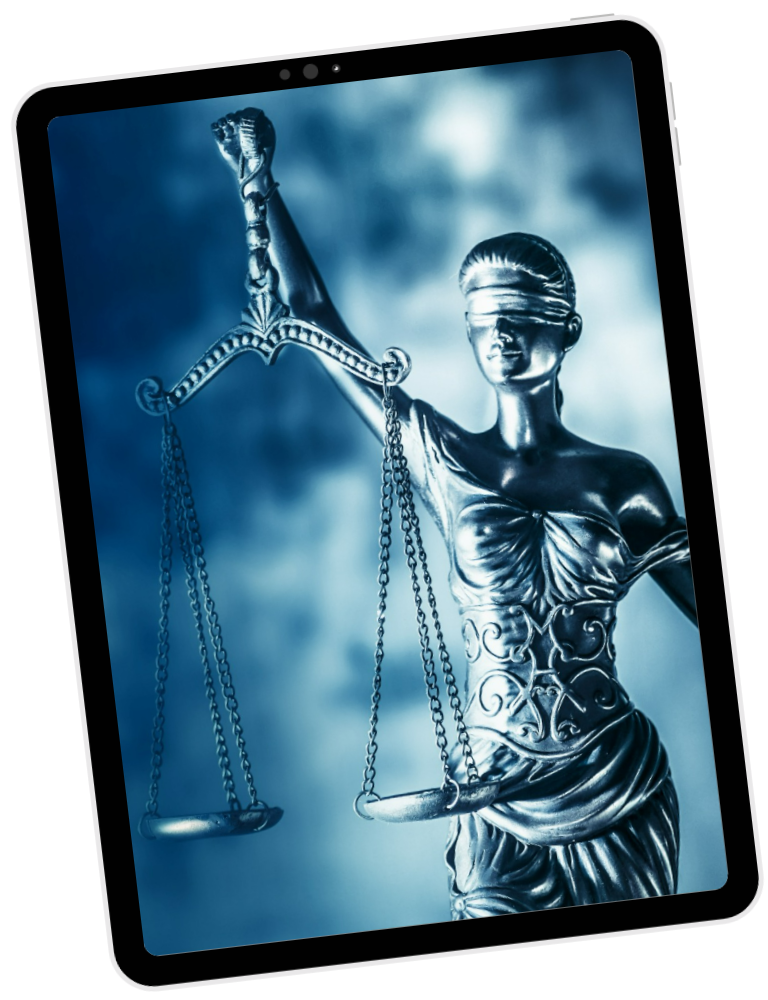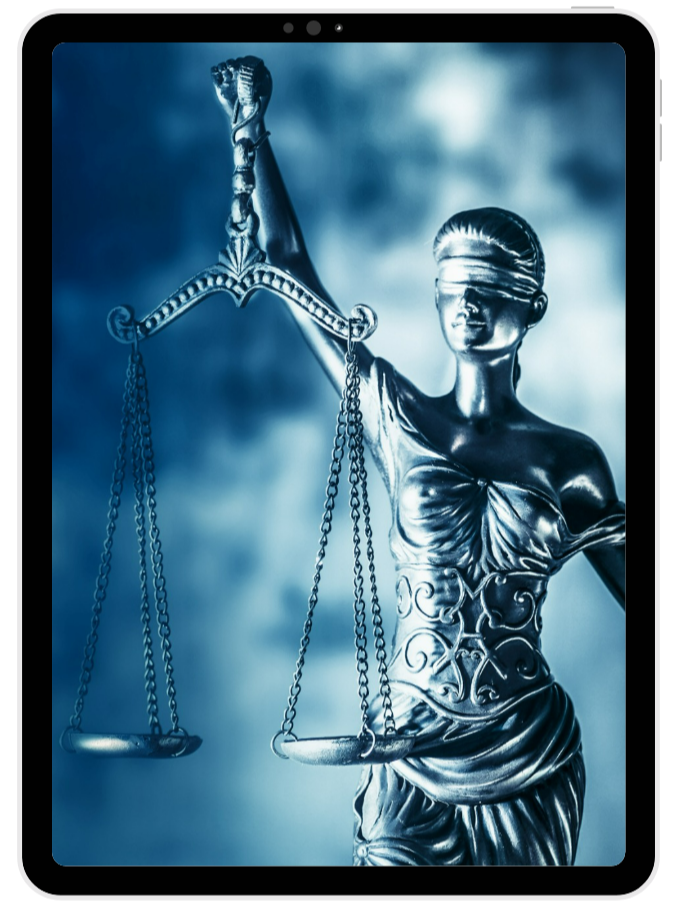What is a great example of a personal statement for law school?
A personal statement can massively improve your chances of getting accepted to a top law school. And today, you get a real example from an applicant with a low GPA who got admitted to a T-10 law school.
Read on!
Example personal statement: Emily
Here’s a real example of a personal statement my client Emily wrote (her name is changed to protect her privacy, everything else is true).
Emily had a serious drawback when she applied to law school; her GPA was significantly below all T-14 law school medians. So her personal statement really had to shine.
And by focusing on her statement, Emily was able to get admitted to a T-10 law school – a far better law school than what she “should” have been able to get admitted to if she’d only focused on her stats.
Here below, I first break down her background and admissions outcome and then share her admissions strategy. Last, we’ll look at her initial draft and then the final, reworked draft that helped her get accepted to a top law school.
Stats
- 3.2 GPA, 171 LSAT
Background
- Out of undergrad for two years. Worked as a Visitor Services Associate at a major art museum in New York for the first 18 months after undergrad, then worked as a paralegal at a well-known plaintiffs’ environmental litigation law firm for the six months leading up to her application to law schools.
- In undergrad, she was involved in primarily personal extracurriculars, including as captain of the club tennis team and the orchestra. She also participated in some community service, though it was a low-time commitment, primarily tutoring elementary students.
- During undergrad, she also interned at various art museums.
Interests
- Emily knew she wanted to go to law school to work in art restitution. This had been a long-held passion of hers: she majored in history to be able to study this, interned with various museums while in undergrad, and wrote her thesis on the restitution of Nazi art.
Law School Goals
- T-14 law school with opportunities specific to art restitution.
Challenges
- GPA significantly below all the T-14 schools’ medians
- Trouble finding recommenders
Admissions Outcome
- Will be attending the University of Michigan Law School, a T-10 law school with specific opportunities in art restitution.
- Emily was admitted despite her 3.2 GPA being significantly below Michigan’s median 3.84 GPA, and her LSAT just reaching their 171 median. She killed it!

Admissions Strategy
With Emily, the main thing she had to overcome was her low GPA. She had a solid LSAT score, but not a score that was so elevated that it would automatically excuse her GPA.
And without having people she undoubtedly knew would write her outstanding letters of recommendation, we had an uphill battle making sure her application materials offset the low GPA.
These are the main pieces of her law school application we worked on to make up for her low GPA.
1. Addendum
Whenever a client comes to me with a low GPA, I look for every opportunity to help them show law schools that their GPA is not indicative of their academic capabilities. So we first analyze their transcript and I inquire whether there is any explanation for their low performance.
For Emily, there was a possible explanation, in that something difficult happened to her in college, but she wasn’t sure how much it had impacted her or whether there was a significant enough pattern in her grades where she could blame it on the incident. She was also very cautious of sharing it, as it was extremely personal and traumatic to her.
We eventually both agreed that it made sense for Emily to write an addendum. While her experience may not fully excuse her grades in the eyes of an admission officer, it was serious enough that it provided context for Emily’s performance. Admission officers want to know this.
The key to writing a law school addendum that doesn’t sound like you’re making an excuse, which was Emily’s biggest concern, is to just state the facts. She didn’t need to say that her GPA was entirely a result of this incident, but she was able to share the details of what happened and how it affected her and her ability to do well in school. It was valid and real.
2. Letters of Recommendation
Emily struggled with figuring out who to ask for her letters of recommendation. She had some professors in mind but hadn’t kept much in touch since graduating in the past two years. And given her grades weren’t great in many of the courses, she didn’t feel she had many professors to ask.
When a client has a low GPA, it is really important to get strong letters of recommendation that talk about how the applicant can handle rigorous academic work. And when an applicant like Emily is only a few years out from undergrad, without any intervening schooling, getting recommendations from undergrad professors is really important.
Many applicants think they can only ask professors where they received an A or the top grade in the class. But if you feel that you excelled in a really tough course, even though you didn’t get an A, and that a professor for that course could actually talk more personally and specifically about your ability to handle rigorous academic work than a professor where you received an A, that will be a stronger letter of recommendation.
That was exactly the case with Emily. She excelled in a History course where she wrote a 300-page paper—no small feat while in undergrad! While she didn’t receive an A in the course, the professor had thought enough of her work to recommend she try to get her essay published. That was clearly a professor who respected Emily, respected her ability to think analytically and write well—both skills needed as a lawyer. The professor was more than thrilled to write her a letter and ended up writing her a really outstanding recommendation.
I helped her gather the courage to ask her super busy, intimidating boss at her paralegal job to write her another letter. The boss asked Emily to write the first draft. This can be so tough! Applicants often feel like this gives them control, but usually, the letters come out worse. And it is often very obvious to admissions officers that you wrote it yourself. Read my advice here on how to write your own letter of recommendation.
With my guidance, Emily was able to use this opportunity to highlight the incredible amount of responsibility she was given, and how much she thrived in the role. This was another way to show law schools that she could handle the responsibility of law school and being a lawyer, as she was doing some pretty high-level legal work already. She also highlighted the intensity of the role she was in, and the demanding hours and expectations.
This was strategic in that it helped combat any assumptions that her undergrad GPA was because of laziness. She clearly showed through her paralegal role that she was willing and able to go above and beyond, even in a very stressful environment.
Finally, given that Emily wanted to go to law school to pursue a degree in art restitution, it was important she have a recommendation that speaks to that passion. Whenever you intend to talk about wanting to go into a specific area of law, especially one as niche as art restitution, you want to show proof of that passion through your experiences. Having a recommendation that can speak to what you have done in that arena can be very persuasive. Emily ended up asking a former supervisor at a prestigious art museum.
Overall, the strategy behind Emily’s letters of recommendation was to show that she (1) could handle rigorous academic work, (2) had already mastered important legal skills of analytical thinking and writing abilities, (3) could thrive in a demanding environment, and (4) had a genuine and proven passion for art restitution.
3. Personal Statement
The most important piece of Emily’s application was undoubtedly going to be her law school personal statement, and (albeit to a lesser extent) her supplemental essays.
Emily’s interest in such a niche area of law—art restitution—was a major advantage she had. And it was a genuine and long-standing interest that she had proof of her through her various internships, jobs, and thesis.
Law schools want a diverse class, which includes interest areas. They don’t want a school of lawyers all practicing the same kind of law; that doesn’t help them look as good. So having a niche interest, and one that you can talk about with deep insight, can make you stand out . . . a lot.
So I knew that having a personal statement that spoke to this interest in a personal and powerful way could go a long way to helping offset Emily’s low GPA.
In the next section, I show you where Emily started with her personal statement and where we got to for her final version so you can see for yourself the difference between an essay that sounds like someone who has some idea why she wants to go to law school, to an applicant whose passion and deep insight into her motivation to go to law school can be felt through the page.
I always say: you want to make the admissions officer reading your personal statement understand and feel your passion to become a lawyer.
I’ve included my comments on Emily’s first draft so you can see my own thinking. But know that there were A LOT of drafts in between this first version and Emily’s final. Emily’s personal statement probably took longer than most to get final, and that was because we both wanted it to be perfect, and also because I knew from talking with her that she had so much more depth and power in her than was coming across on the page. So I kept pushing. (Sorry I’m not sorry!)
In Emily’s own (maybe exaggerating) words: “You forced me to write and rewrite my personal statement maybe 20 times. But I forgive you because there is absolutely no way it would have turned into the masterpiece I think that it is if it were not for you.”
The main differences I want you to notice between the first draft and Emily’s final version are:
(1) the cohesive narrative surrounding her passion for art restitution and her desire to attend law school—the final essay reads more like a single story than her first draft’s series of disjointed stories,
(2) a grounding of her passion in the personal—she uses a personal story about her family to explain the origins of her passion for art restitution. This helps ground the narrative a bit more, keeps it from feeling too much like an academic paper.
(3) the global insight Emily shares about the importance of art restitution—she shows not only why she cares, but also why we should care about the work she is going to do. And she shows that she can think critically about her experiences and how they apply in the real world, an important skill for lawyers.
(4) a specific and thought-out plan for how she’ll get to her legal goals—shows maturity and insight into the legal field that most applicants don’t have.
Sample Personal Statements: Before & After
Emily’s Initial Draft

Emily’s Final Personal Statement
“I grew up feeling connected to my parents but detached from cultural roots. My parents came from Jewish and Catholic traditions, so they raised me with a little of both. When it came time to do family trees in elementary school, I was lost beyond my grandparents’ generation. My mother reached out to my great-aunt Terry, the matriarch of my mother’s side, and thanks to her I know the story of one branch of my family tree: the Lauterbachs, Austrian Jews who fled after a pogrom, leaving behind their successful hotel. This is the oldest story that I have about my ancestors, and I cling to it as part of my identity.
In college, I pursued a degree in history to learn and tell other people’s stories, and in small ways, to find my own. Given my long-held interest in art and museums, I explored art history, but the academic perspective felt too detached, and I preferred using art as evidence or context in history papers, rather than as the subject.
I was always grasping at things tangentially related to my weak sense of family history, so when I learned about the famous Adele Bloch Bauer I— the painting at the heart of a struggle between a Holocaust victim’s heir and a national Austrian museum, depicted in the “Woman in Gold” film—I clung to the story. I struggled to understand why there had been so much resistance to do what clearly seemed like the right thing. I was perplexed that there had been no clear avenue for families hoping to recover their looted art, searching to find a piece of their lost identity and stolen pride. Why had it taken decades for the pride of the Belvedere Museum in Vienna to be recognized by her real name and returned to her rightful owner?
I felt this same frustration when visiting 21 Rue de la Boétie, an exhibition in homage to French Jewish art dealer Paul Rosenberg—who represented Léger and Matisse among others and was forced to flee Paris in WWII, leaving behind many paintings to be stolen, destroyed, or sold by the Nazis. The last room of the exhibit contained a painting that had just been returned to his estate from a Norwegian museum a year earlier, and the plaque spoke about the ongoing efforts to find and recover additional works. Reading about how heirs were still, decades later, having to fight to recover what was rightfully a part of their family history, a part of their identity, left me furious. It felt like fate; as I was nearing the end of my quest for a senior thesis topic, I had found something that combined history, art, and justice, along with my personal search for identity.
Hoping to get a quote for my senior thesis on the upward trend of restitution in cases of Nazi-looted art, I met with the Manhattan District Attorney’s Antiquities Trafficking Unit, who track down looted antiquities from war-torn or impoverished countries. The head of the unit told me that the landmark international agreement to return stolen works, known as the Washington Principles, was unenforceable and not self-policed, in his blunt words, “useless.”
Another problem that I encountered in my research was that the people holding these works often fail to appreciate their symbolic value. For a museum, these paintings are valuable works by famous artists. But for those whose heritage, ancestors, or past, is tied to an object, the value is primarily its history. A work of art cannot be separated from its past, and as a physical object, it comes to represent the people who cherished it. For me, restituting a work is a way of honoring those people. Choosing not to restitute a work legitimizes the direct and intentional dehumanizing of the Nazi regime. This result and its implications are unacceptable.
It is to this end that I am seeking a law degree. I intend to be an attorney who represents heirs of stolen, looted, and missing works. While restituting art can never bring back the millions of lives lost in the Holocaust or hold accountable those who were guilty or complicit in the looting, it can still provide a small glimmer of hope, a way to honor the dead along with the survivors and repair a missing piece of an heir’s identity. It remains a way to disrupt the results of the original looting, a small right in the face of unspeakable wrongs.
I envision starting my career as a litigator in an art recovery practice group. Through these cases I will bring to light the stories of the individuals tied to these works and ensure that their stories are always told when their works are displayed. I intend to spend my career contributing to the eventual paradigm shift at which point museums and individuals will always feel obligated to restitute looted works.”
How do you write a good personal statement for law school?
Now you know what Emily’s personal statement looked like and why.
And by now you also know that your GPA and LSAT score aren’t the only things that determine whether you’ll get accepted or not.
Many applicants with amazing GPA and LSAT scores don’t get into top law schools, while plenty of applicants without those same scores do get in. (Just like Emily.)
The secret to getting admitted to law school is to tell a cohesive story.
Don’t try to include everything and anything. Instead, form a story around many or individual experiences.
Your personal statement also needs to answer why you want to go to law school. You don’t have to know what type of lawyer you want to become, but you should be able to answer why.
Finally, one of the most important parts of your personal statement is to show admissions officers how you think. After all, they’ll want to know if you have what it takes to thrive as a lawyer.
Get law school personal statement prompts
There you have it! You now have a highly insightful example of a personal statement for law school.
And as you know by now, the topic you choose is one of the most important parts of your statement.
To help you create YOUR personal statement, I’ve created a list with prompts to brainstorm your topic.
Download it here:
Frequently asked questions about personal statement examples
What should be the opening sentence of a law school personal statement?
How should you start your personal statement? The key is to introduce your topic fast and then build your story. If you include a lengthy introduction, you won’t have as much space to fill in your story… And frankly, you’ll lose the admission officer’s attention.
Start with an engaging introduction that clearly shows the reader what you will be talking about and keep them interested in reading the rest of your statement.
What not to say in a law school personal statement?
You’ll generally want to avoid any overused personal statement topics. These are historical or political events (unless you were personally affected by them in a meaningful way – just like Emily had a family history that made her interested in Nazi art lootings), athlete stories, generic study abroad stories, high school events, creative writing-type essays, or relying on a difficult story as a “crutch” instead of using it to build your cohesive story.
How long should a law school personal statement be?
The length of your personal statement depends on the law school, but the typical length is two pages. Check what law schools state about their requirements to understand how long your personal statement should be.





